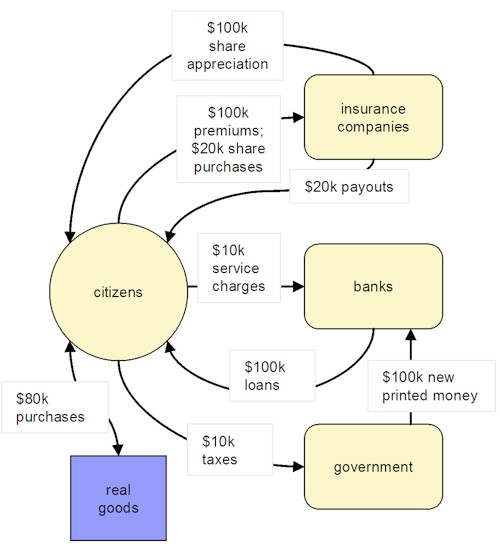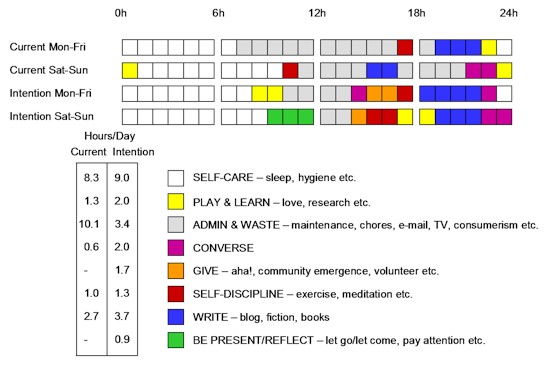 Say yes, Be generous, Speak up, Love more, Slow down, and Trust yourself.: These are the six lessons in Patti Digh’s new book, Life is a Verb: 37 Days to Wake Up, Be Mindful, and Live Intentionally, taught through some of the most stunning stories you will ever read. It’s now available. Go buy copies for yourself, for your children (Patti wrote it for her daughters) and for anyone you love. This is going to be an incredibly important and successful book. Here’s her newest story about the importance of trusting yourself. Say yes, Be generous, Speak up, Love more, Slow down, and Trust yourself.: These are the six lessons in Patti Digh’s new book, Life is a Verb: 37 Days to Wake Up, Be Mindful, and Live Intentionally, taught through some of the most stunning stories you will ever read. It’s now available. Go buy copies for yourself, for your children (Patti wrote it for her daughters) and for anyone you love. This is going to be an incredibly important and successful book. Here’s her newest story about the importance of trusting yourself.
“You cannot productively help people by sitting them in rows of chairs and talking to all of them at once.”: Another great essay by William Tozier, this time on how new businesses really get started and how innovation really happens. Teaser: Weósmall businesses, startups, independentsótaken as a whole we’re more than all the large-scale corporations combined…Don’t care what those people in the big Old world think. Thatís not a slangy lyric missing its pronoun, it’s a fucking imperative. Stop caring about what those people think. Stop golfing. Stop going to dawn breakfasts to rub shoulders with people who just got lucky and think being rich is proof of their acumen. Stop going to seminars. Stop asking them.
Better you ask 100 random people for helpóat the same time they’re asking youóthan ask one Professional for Expensive Advice. “We have reached a point of planetary emergency”: That is the testimony of NASA climatologist Jim Hansen, testifying before a congressional committee exactly 20 years after he first pointed out the dangers of climate change to a somewhat incredulous Senate. “There are tipping points in the climate system, which we are very close to, and if we pass them, the dynamics of the system take over and carry you to very large changes which are out of your control.” You can read his full report here. Hansen wants to jail the Big Oil executives who knowingly denied their complicity in climate change. The ‘Infantile’ Cult of Leadership: Johann Haro in the Independent laments the growing propensity of citizens everywhere to wait for some ‘leader’ to come and tell them what to do, instead of taking responsibility themselves. If you’re a fan of Mandela, Churchill or Gandhi you won’t like this article. In business in the US in particular, this leader-worship has become a national mania. Flemming Funch on Complexity & Freedom: Fascinating SlideShare presentation from Flemming. He explains what complex systems are (most social and ecological systems are complex), then notes “Self-organized criticality: When things have self-organized so that they’re wound up, ready to go ï If something happens, something else is likely to happen ï Mostly small things will happen, but sometimes big things will happen.” This it seems ties into Tipping Point theory. He goes on to theorize: “You have more freedom within a complex network ï Your freedom is potentially more useful if the network is in a critical state ï The value of a network is proportional to its complexity.” You can be the butterfly in the Butterfly Effect, if you know where and how to be; and butterflies, of course, are free. Waiting for Dave Snowden’s thoughts on this. Inflation, What Inflation?: Interesting data via Dale Asberry indicates food costs are up an average of about 20% in the past year. Fuel costs have approximately doubled in that time period. Health costs, insurance costs, property taxes, all way up. These are the things that most of us spend most of our money on. So there is no way inflation for the average consumer is anything less than 20%. I just looked at my costs over the past year and that’s what they’ve gone up by. So what is the “official” rate of inflation in Canada and the US? 2% and 4% respectively. When are we going to call them out on this fraud?
Saudis Promise to Pump More Oil…Again: To try to contain the price panic over the realization that the age of oil is ending, the Saudis have promised, as they have repeatedly done in the past, to produce more oil than they can. This study shows why they can’t. As the chart above (thanks, Oil Drum) illustrates, even with the accelerated production generated by pumping huge amounts of water into the wells to drive up the last of the oil, and even with every possible site being brought online, they are producing as much as they can, and after 2012 it’s all downhill, as it has been in the 20 other countries which have exhausted their supplies. Couple that with 20% per annum growth in demand from Asia and you’ll understand why the price is just going to keep rising. Struggling Nations’ Plight Caused by Affluent Nations: Yet another report indicates that the inability of struggling nations to look after their own essential needs is the result of affluent nations’ theft of their natural resources, price-gouging on goods sold back to them, imposition of usurious IMF/World Bank covenants and policies, and tacit (and in some cases explicit) support of corrupt administrations. Just as we have ruined our own countries for future generations (and for our First Nations peoples), we have ruined struggling nations for their own desperate people. Time to repay our debts to them. Given Up Waiting for Gmail to Add ‘To Do’ Lists: Although Google has been promising to add task lists to Gmail for a year, there’s nothing yet. So I’ve started using the Remember the Milk GMail extension for Firefox. I don’t find RTM particularly intuitive, but it’s better than putting my To Dos in Gmail messages to myself. So now my GMail page has my GTalk IM/VoIP contact list in the left pane, my messages (GMail and other forwarded email, GTalk chats and Twitters) in the middle pane, and my To Do list in the right pane. Communications central! Now if only it had a Skype and a Second Life window… Will SlideCast Make Bums-On-Chairs Conferences Obsolete?: I’ve been putting my slide decks on SlideShare for a couple of years, but recently became aware of SlideCast, which lets you sync your audio track or your podcasts with your SlideShare slides. I wonder why we would need to go to most conferences anymore if the speakers would all agree to use SlideCast.Instead, we might make the SlideCasts prereading material for Unconferences and for Open Space events, real conversations instead of one-way dissertations. |
Navigation
Collapsniks
Albert Bates (US)
Andrew Nikiforuk (CA)
Brutus (US)
Carolyn Baker (US)*
Catherine Ingram (US)
Chris Hedges (US)
Dahr Jamail (US)
Dean Spillane-Walker (US)*
Derrick Jensen (US)
Dougald & Paul (IE/SE)*
Erik Michaels (US)
Gail Tverberg (US)
Guy McPherson (US)
Honest Sorcerer
Janaia & Robin (US)*
Jem Bendell (UK)
Mari Werner
Michael Dowd (US)*
Nate Hagens (US)
Paul Heft (US)*
Post Carbon Inst. (US)
Resilience (US)
Richard Heinberg (US)
Robert Jensen (US)
Roy Scranton (US)
Sam Mitchell (US)
Tim Morgan (UK)
Tim Watkins (UK)
Umair Haque (UK)
William Rees (CA)
XrayMike (AU)
Radical Non-Duality
Tony Parsons
Jim Newman
Tim Cliss
Andreas Müller
Kenneth Madden
Emerson Lim
Nancy Neithercut
Rosemarijn Roes
Frank McCaughey
Clare Cherikoff
Ere Parek, Izzy Cloke, Zabi AmaniEssential Reading
Archive by Category
My Bio, Contact Info, Signature Posts
About the Author (2023)
My Circles
E-mail me
--- My Best 200 Posts, 2003-22 by category, from newest to oldest ---
Collapse Watch:
Hope — On the Balance of Probabilities
The Caste War for the Dregs
Recuperation, Accommodation, Resilience
How Do We Teach the Critical Skills
Collapse Not Apocalypse
Effective Activism
'Making Sense of the World' Reading List
Notes From the Rising Dark
What is Exponential Decay
Collapse: Slowly Then Suddenly
Slouching Towards Bethlehem
Making Sense of Who We Are
What Would Net-Zero Emissions Look Like?
Post Collapse with Michael Dowd (video)
Why Economic Collapse Will Precede Climate Collapse
Being Adaptable: A Reminder List
A Culture of Fear
What Will It Take?
A Future Without Us
Dean Walker Interview (video)
The Mushroom at the End of the World
What Would It Take To Live Sustainably?
The New Political Map (Poster)
Beyond Belief
Complexity and Collapse
Requiem for a Species
Civilization Disease
What a Desolated Earth Looks Like
If We Had a Better Story...
Giving Up on Environmentalism
The Hard Part is Finding People Who Care
Going Vegan
The Dark & Gathering Sameness of the World
The End of Philosophy
A Short History of Progress
The Boiling Frog
Our Culture / Ourselves:
A CoVid-19 Recap
What It Means to be Human
A Culture Built on Wrong Models
Understanding Conservatives
Our Unique Capacity for Hatred
Not Meant to Govern Each Other
The Humanist Trap
Credulous
Amazing What People Get Used To
My Reluctant Misanthropy
The Dawn of Everything
Species Shame
Why Misinformation Doesn't Work
The Lab-Leak Hypothesis
The Right to Die
CoVid-19: Go for Zero
Pollard's Laws
On Caste
The Process of Self-Organization
The Tragic Spread of Misinformation
A Better Way to Work
The Needs of the Moment
Ask Yourself This
What to Believe Now?
Rogue Primate
Conversation & Silence
The Language of Our Eyes
True Story
May I Ask a Question?
Cultural Acedia: When We Can No Longer Care
Useless Advice
Several Short Sentences About Learning
Why I Don't Want to Hear Your Story
A Harvest of Myths
The Qualities of a Great Story
The Trouble With Stories
A Model of Identity & Community
Not Ready to Do What's Needed
A Culture of Dependence
So What's Next
Ten Things to Do When You're Feeling Hopeless
No Use to the World Broken
Living in Another World
Does Language Restrict What We Can Think?
The Value of Conversation Manifesto Nobody Knows Anything
If I Only Had 37 Days
The Only Life We Know
A Long Way Down
No Noble Savages
Figments of Reality
Too Far Ahead
Learning From Nature
The Rogue Animal
How the World Really Works:
Making Sense of Scents
An Age of Wonder
The Truth About Ukraine
Navigating Complexity
The Supply Chain Problem
The Promise of Dialogue
Too Dumb to Take Care of Ourselves
Extinction Capitalism
Homeless
Republicans Slide Into Fascism
All the Things I Was Wrong About
Several Short Sentences About Sharks
How Change Happens
What's the Best Possible Outcome?
The Perpetual Growth Machine
We Make Zero
How Long We've Been Around (graphic)
If You Wanted to Sabotage the Elections
Collective Intelligence & Complexity
Ten Things I Wish I'd Learned Earlier
The Problem With Systems
Against Hope (Video)
The Admission of Necessary Ignorance
Several Short Sentences About Jellyfish
Loren Eiseley, in Verse
A Synopsis of 'Finding the Sweet Spot'
Learning from Indigenous Cultures
The Gift Economy
The Job of the Media
The Wal-Mart Dilemma
The Illusion of the Separate Self, and Free Will:
No Free Will, No Freedom
The Other Side of 'No Me'
This Body Takes Me For a Walk
The Only One Who Really Knew Me
No Free Will — Fightin' Words
The Paradox of the Self
A Radical Non-Duality FAQ
What We Think We Know
Bark Bark Bark Bark Bark Bark Bark
Healing From Ourselves
The Entanglement Hypothesis
Nothing Needs to Happen
Nothing to Say About This
What I Wanted to Believe
A Continuous Reassemblage of Meaning
No Choice But to Misbehave
What's Apparently Happening
A Different Kind of Animal
Happy Now?
This Creature
Did Early Humans Have Selves?
Nothing On Offer Here
Even Simpler and More Hopeless Than That
Glimpses
How Our Bodies Sense the World
Fragments
What Happens in Vagus
We Have No Choice
Never Comfortable in the Skin of Self
Letting Go of the Story of Me
All There Is, Is This
A Theory of No Mind
Creative Works:
Mindful Wanderings (Reflections) (Archive)
A Prayer to No One
Frogs' Hollow (Short Story)
We Do What We Do (Poem)
Negative Assertions (Poem)
Reminder (Short Story)
A Canadian Sorry (Satire)
Under No Illusions (Short Story)
The Ever-Stranger (Poem)
The Fortune Teller (Short Story)
Non-Duality Dude (Play)
Your Self: An Owner's Manual (Satire)
All the Things I Thought I Knew (Short Story)
On the Shoulders of Giants (Short Story)
Improv (Poem)
Calling the Cage Freedom (Short Story)
Rune (Poem)
Only This (Poem)
The Other Extinction (Short Story)
Invisible (Poem)
Disruption (Short Story)
A Thought-Less Experiment (Poem)
Speaking Grosbeak (Short Story)
The Only Way There (Short Story)
The Wild Man (Short Story)
Flywheel (Short Story)
The Opposite of Presence (Satire)
How to Make Love Last (Poem)
The Horses' Bodies (Poem)
Enough (Lament)
Distracted (Short Story)
Worse, Still (Poem)
Conjurer (Satire)
A Conversation (Short Story)
Farewell to Albion (Poem)
My Other Sites



 This is the fourth chapter of what is evolving of its own accord into a strange sort of mystery novel. The first chapter, Miro, is published
This is the fourth chapter of what is evolving of its own accord into a strange sort of mystery novel. The first chapter, Miro, is published 













